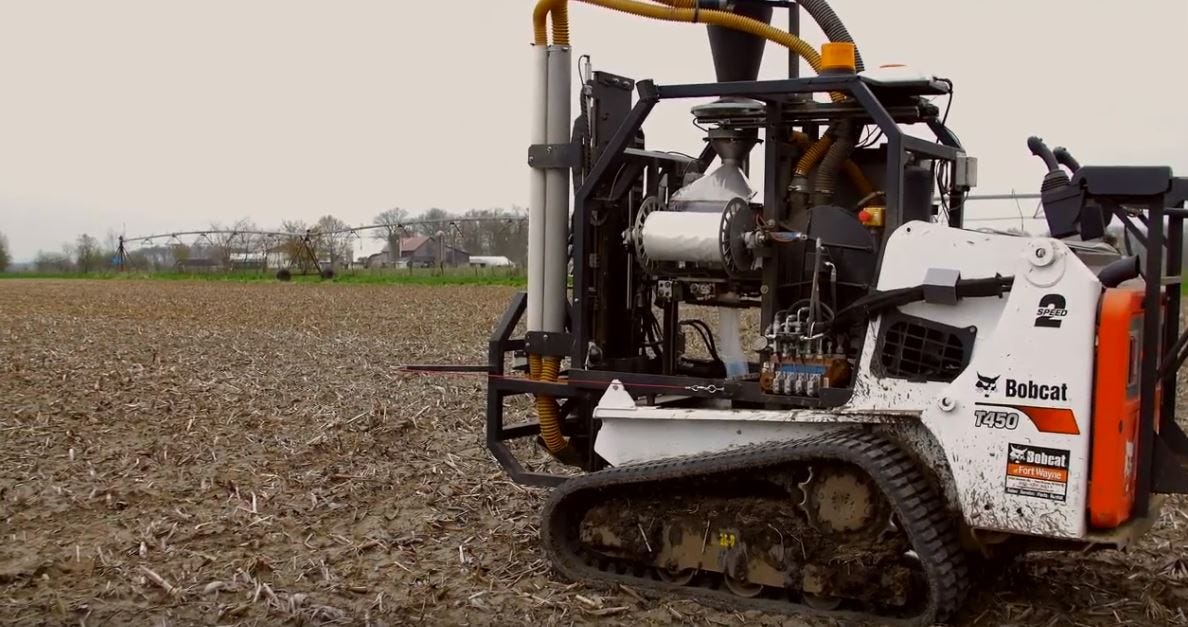Soil Sampling Robot Lands $200K, Grows Fleet
 Rogo plans to expand its fleet to four robots by the fall.
Rogo plans to expand its fleet to four robots by the fall.
Subscriber Benefit
As a subscriber you can listen to articles at work, in the car, or while you work out. Subscribe NowFarmers spend big bucks on fertilizer; a West Lafayette-based startup says it’s typically the third highest per-acre expense. Farmers rely on soil sampling—typically done by hand—to determine how much fertilizer to apply to their fields and where to spray it. Plagued by human error, the samples provide poor guidance for fertilizing decisions, says Rogo co-founder and President Drew Schumacher. The startup is unleashing robots into farmers’ fields instead; Rogo says the high-tech approach automates soil sampling, giving farmers better data to make fertilizer decisions.
Co-founded by two Purdue University alumni, Rogo recently earned $200,000 in funding from the Purdue Ag-Celerator Fund and Ag Alumni Seed, a Purdue-affiliated nonprofit. The startup says the university’s backing is “hugely valuable,” adding credibility and bringing validation from experts in the field.
“There has not been major advancements in soil fertility management in over 40 years,” says Schumacher. “The [typical] process today is pretty tedious; you use a metal hand probe, stick it in the ground, jump on it, pull it back up and hope it pulls out the soil properly. We felt like there had to be a better way.”
The startup says, using traditional soil sampling methods, even a one-inch variance in the depth of samples can produce up to a 20 percent difference in nutrient content measurements. Schumacher says the company’s robot, called SmartCore, eliminates errors by automating the soil sampling process, “so farmers can get better ROI (return on investment) out of the soil fertility inputs.” Sitting atop a Bobcat skid steer chassis, Rogo says its technology collects samples with precise repeatability, ensuring each sample is pulled from the same depth, location and pattern.
“The two biggest errors with [conventional] soil sampling are depth repeatability of each sample core and location repeatability of each sample core,” says Schumacher. “Our robot will sample a field, and two years later, the robot can come back to the same field and sample within a foot of each of those original core locations—so you’re comparing apples to apples. And we’re eliminating additional ‘noise’ in your data, so you can really understand how the field is changing over time, and that’s critical for agronomy.”
The startup’s business model provides sampling as a service per acre, and Schumacher says it’s priced competitively compared to current services. Rogo will drive one of its two robots to the farmer’s field, and guided by algorithms and Lidar sensors, the technology automatically collects the samples, then packages and labels each one to be shipped to a third-party laboratory for analysis.
“One of our operators will unload the robot and basically hit ‘go’ on a pre-loaded mission, and it will go soil sample the entire field on its own and return back to the trailer,” says Schumacher. “The operator will load it up and take it to the next field.”
Rogo says it sampled nearly 20,000 acres in two months and generated more than $60,000 in revenue during its first commercial soil sampling season. The company’s current two robots have sampled fields in Indiana, Ohio and Illinois; Rogo plans to expand its fleet to four robots by the fall and extend its geographic reach. The startup says it’s the first autonomous robot soil sampling service being sold to row crop farmers in the U.S.
“Our biggest competition is the humans who are doing it today and helping people understand the advantages that can be realized when you eliminate those human errors,” says Schumacher. “We sort of compete with the industry incumbent method.”
Rogo says its strategy can be more environmentally friendly. Schumacher notes farmers sometimes might be over-applying due to incorrect soil data “which makes total logical sense, but the more accurate you can be, the less over-application,” reducing the amount of runoff.
“With a more accurate soil sampling service, you can…cut out fertilizer where it’s not needed and add fertilizer where it is needed to boost yields, and ultimately, significantly improve the bottom line for every farmer,” says Schumacher. “We’re passionate about solving real problems, and it just so happens a robot helps solve this problem.”
Schumacher says Rogo is growing its fleet from two to four robots now, and longer-term, will focus on R&D efforts.
Schumacher says Rogo’s business model allows it to easily fit in to a farm operation’s workflow.
